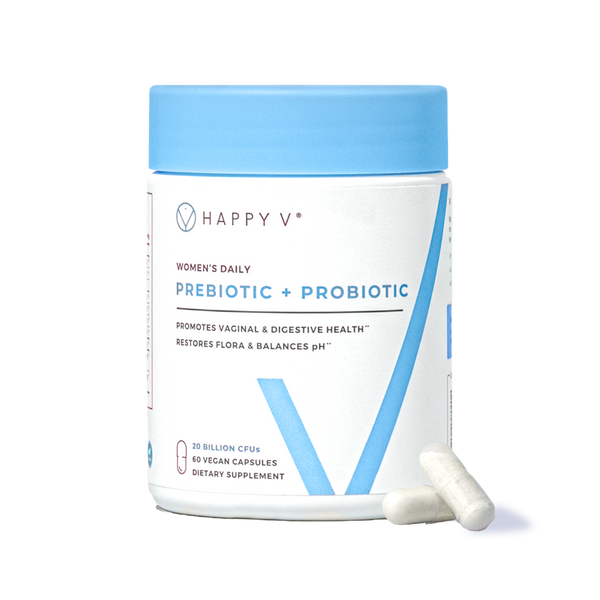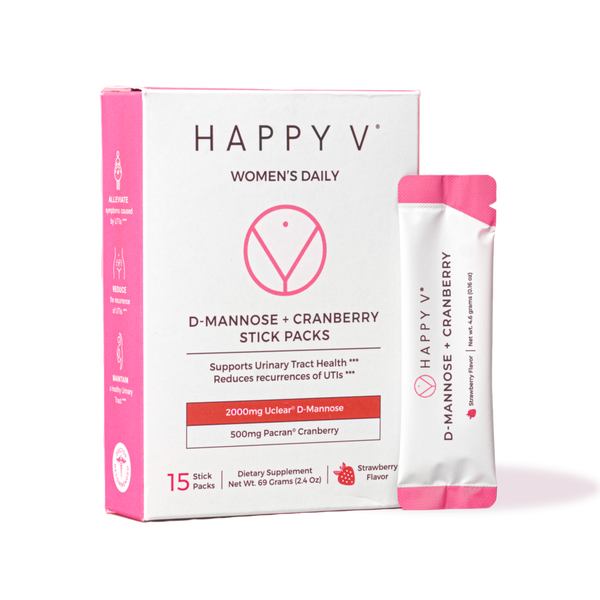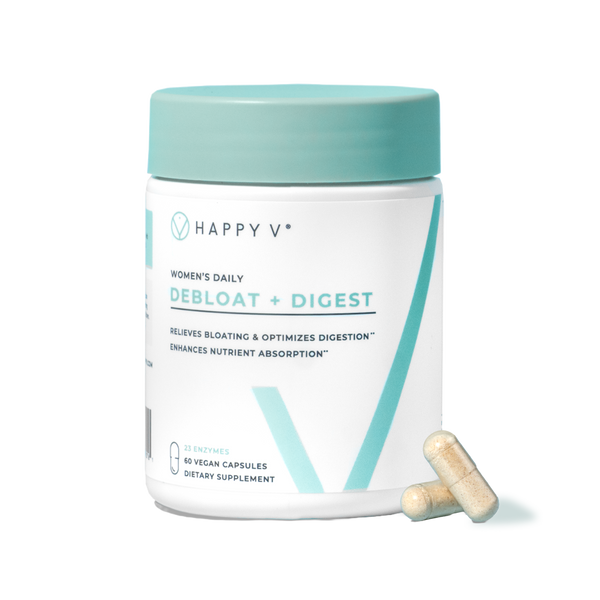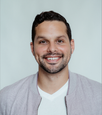- Fact Checked
- August 01, 2025
- 9 min read
Table of Contents
Table of Contents
Women’s bodies are truly miraculous, allowing us to experience sexual satisfaction and even grow another life. But these impressive organs are also susceptible to unique health challenges, such as fibroid growths.
Though not considered harmful to women’s health, uterine fibroids can still be incredibly uncomfortable1. While there are times that surgery may be necessary, there are other, more natural interventions many women use to shrink fibroids and avoid more invasive procedures and medical treatments.
What Are Uterine Fibroids?
Uterine fibroids, also known as leiomyomas or myomas, are noncancerous growths in the uterus2. These growths can range drastically in size, from as small as a seed to as large as a grapefruit. While small growths are often asymptomatic (meaning they don’t cause any symptoms), larger growths can enlarge or even distort the shape of the uterus, leading to discomfort3.
The most common fibroid symptoms include:
- Painful periods4
- Heavy periods/heavy menstrual bleeding5
- Frequent urination6
- Persistent bloating that is not associated with eating or meals
- A feeling of fullness in the pelvic region, sometimes described as pelvic pressure
- Pain in the lower abdomen, especially during sex7
- Lower backache
- Constipation
- Swelling in the lower abdominal area
Fibroids can also be associated with a higher risk of complications during pregnancy, including infertility, miscarriage, or premature labor, although these complications are rare8.
Uterine fibroids are very common; in fact, about 26 million women in the United States between the ages of 15 and 44 have uterine fibroids. By age 49, over 70% of white women and 84% of black women have been diagnosed with a uterine fibroid at some point in their lives.
What Causes Uterine Fibroids?
The exact cause of uterine fibroids is still not known. However, several theories are being researched, including:
- Hormonal triggers. Research shows that fibroids contain more estrogen hormone receptors than other types of tissue, leading researchers to think there may be a link between fibroid growth and hormones. Additionally, fibroids tend to grow more rapidly during pregnancy when hormone levels are high, and they seem to shrink when medications that antagonize estrogen are used9. One study of pre-menopausal women confirmed that higher levels of estrogen hormone increase the risk of fibroids, but more research needs to be done to say hormones definitively trigger fibroids.
- Genes. As with so many other conditions, there may be a genetic component to uterine fibroids, especially given the discovery that fibroids contain different genes than are found in the uterus muscles10.
- Growth factors. Growth factors, like insulin, may affect the growth of fibroids.
Risk Factors for Uterine Fibroids
If you have a uterus, you’re at risk for uterine fibroids, but there are some specific factors that make it more likely you’ll experience the development of fibroids, including:
- Age. Though they can occur at any age, young women with high estrogen levels are more likely to get fibroids than those who have experienced menopause11.
- Ethnicity. African-American women experience a higher prevalence of uterine fibroids.
- Heredity. If you have a family member with a fibroid tumor, you’re three times more likely to get one yourself.
- Obesity. Obesity is a known risk factor for many diseases and medical conditions, including fibroids.
- Your daily diet. Consuming red meat is linked with an increased risk for fibroids, as is a diet high in processed foods, alcohol, and/or caffeine.
Medical Fibroid Treatment
We asked experienced OBGYN and Happy V Advisor Dr. Barry Peskin how he handles uterine fibroids in his practice. He told us that when it comes to the treatment of uterine fibroids, the two most common interventions are hormonal birth control, like a birth control pill or intrauterine device (IUD), and surgery.
“Hormonal birth control is often prescribed for fibroids because it helps your body achieve hormonal balance, which can reduce fibroid pain symptoms and heavy bleeding and minimize the chance of future fibroids developing.” - Dr. Peskin
While helpful for short-term relief, Dr. Peskin says, birth control is not a permanent solution since it cannot shrink fibroids. For many women, these interventions also have unintended side effects.
For large, painful growths or multiple growths, Dr. Peskin says he or another doctor may recommend surgery to remove fibroids completely. In extreme cases, your doctor may suggest a hysterectomy or an abdominal myomectomy. These options may impact or prevent future pregnancy, so it’s important to share your history and goals with your provider before undergoing surgery for fibroids.
Natural Treatment Options for Uterine Fibroids
While the exact cause of fibroids isn’t known, research confirms fibroids are estrogen-dependent. This means that high estrogen levels play a key role in fibroid development and growth12.
Fortunately, along with medical interventions, Dr. Peskin says there are many natural remedies and even simple lifestyle changes that can balance hormones, reduce excess estrogen in the body, and minimize the chance of fibroid development.
1. Change Your Diet
Healthy diets don’t just ward off heart disease, diabetes, and unwanted weight gain. The foods you eat can influence your overall hormonal levels.
A nutritious diet that protects you from fibroids includes:
- Lots of vegetables, particularly cruciferous vegetables. Vegetables like cabbage, cauliflower, broccoli, kale, and turnips are rich in phytochemicals, which block estrogen production13.
-
Colorful fruits. Focus on eating a wide variety of fruits, especially those that have been shown to reduce estrogen overload, like:
- Pomegranates
- Berries and cherries
- Citrus fruits like mandarins, grapefruits, lemons, and oranges
- Figs
- Organic meats and dairy products. Non-organic meat and dairy products may contain artificial estrogen, which can boost your body’s estrogen levels. Eating organic meat and dairy can keep your body’s estrogen levels more stable.
2. Take Supplements
Increasing your intake of certain vitamins and minerals through supplements may help provide relief from current and future fibroids. Many of these supplements are easy to find and incredibly cost-effective. They include:
- Magnesium — Helps your body to control hormone levels
- Diindolylmethane — Helps lower your estrogen overload
- Milk thistle and dandelion supplements — Can detoxify your body and reduce estrogen levels.
- Omega-3 — Some evidence shows they can balance estrogen levels
- Vitamin B and Vitamin D — Can also reduce estrogen overload
- Turmeric—May help reduce inflammation and oxidative stress, which can contribute to fibroid growth
- Phytochemicals— Act as an antioxidant and reduce the growth of fibroids; found naturally in green tea
3. Balance Your Microbiome
All systems—including the female reproductive system—need healthy bacteria (aka probiotics) to function properly14. One of the most important healthy bacteria is Lactobacillus15. There are several ways to increase your probiotic intake and balance your microbiome. These include:
- Taking probiotics, especially those designed for vaginal health. Make sure the label contains clinically proven strains. This will not only help you manage your fibroids but also support your overall health.
- Eating probiotic-rich foods, especially Greek yogurt, kombucha, and other fermented foods.
- Consuming fiber-rich foods like broccoli, chickpeas, artichokes, and raspberries. Fiber doesn’t just regulate your digestion; it actually helps healthy bacteria to grow.
- Avoiding artificial sweeteners since they may have a negative effect on your gut microbes.
- Adding more chocolate to your diet! No, really! Cocoa has been shown to promote the growth of good bacteria.
Prebiotic + Probiotic
Maintains vaginal pH and restores gut health.
4. Improving Your Liver Function
Wait, what does the liver have to do with uterine fibroids? A lot, actually.
The liver helps to metabolize estrogen. If your liver is not functioning properly, your estrogen levels will increase16.
To keep your liver in tip-top shape:
- Eat a healthy diet. Focus on those fruits, veggies, whole grains, and lean meats. Avoid fatty or calorie-rich foods since these can diminish your liver function17.
- Minimize alcohol consumption. Alcohol can destroy your liver permanently.
- Reduce your caffeine intake. Coffee, soda, and other caffeine-rich foods and drinks can negatively impact your liver. If coffee is a part of your daily routine, try cutting back to a cup a day or even going decaf.
- Exercise to reduce fat around the liver and keep it functioning properly.
5. Reduce Your Toxin Load
Since toxin overload is linked to decreased liver function and decreased liver function is linked with higher estrogen levels, reducing your toxin overload can ultimately reduce your risk of fibroids.
To prevent overexposure to toxic substances, try:
- Consuming natural oils like olive oil, castor oil, and coconut oil. These oils are natural detoxifiers that can cleanse your body of unwelcome toxins.
- Eating nuts and seeds like walnuts, almonds, and flax seeds. These fiber-rich foods can aid in the detoxification process.
- Eating protein-rich foods like meats and Greek yogurt. Protein enhances the natural detoxification process that occurs in the liver.
- Incorporating liquid chlorophyll into your routine. Chlorophyll has been shown to bind to toxins in the body before they can oxidize (aka cause problems).
- Avoiding plastic when you cook or eat.
- Getting plenty of sleep. A good amount of sleep keeps your body functioning optimally.
For Natural Support With Fibroids, Try Happy V Probiotics
At Happy V, improving women’s health is our top priority. That’s why all our products contain ingredients that are clinically proven to support women’s bodies.
Though originally formulated to combat bacterial vaginosis and other vaginal infections, our best-selling Prebiotic + Probiotic has helped thousands of women find relief from a whole host of discomforts, including yeast infections, digestive issues, PCOS, and even uterine fibroids. But don’t take our word for it! Read through our hundreds of verified, 5-star reviews.















